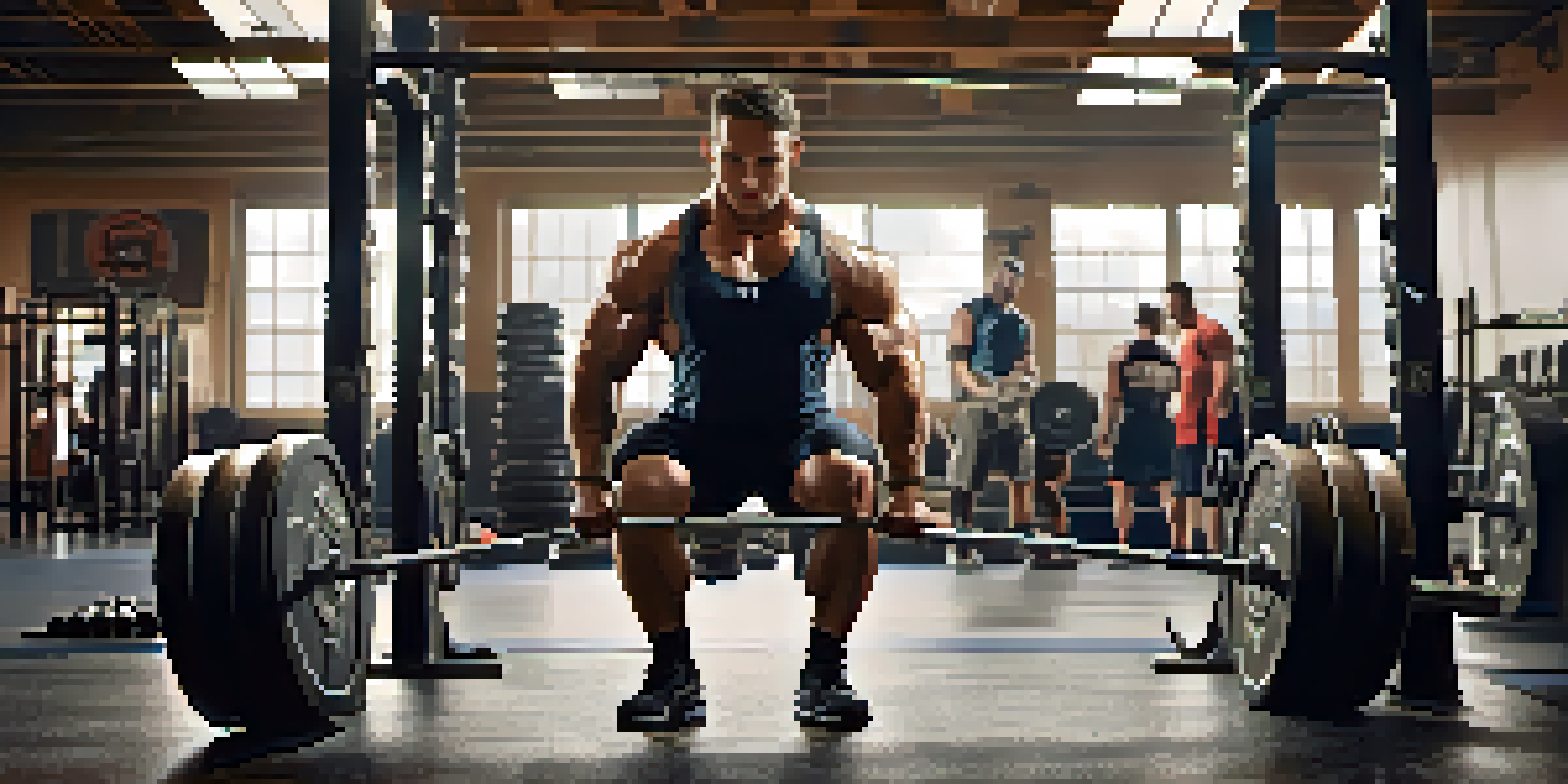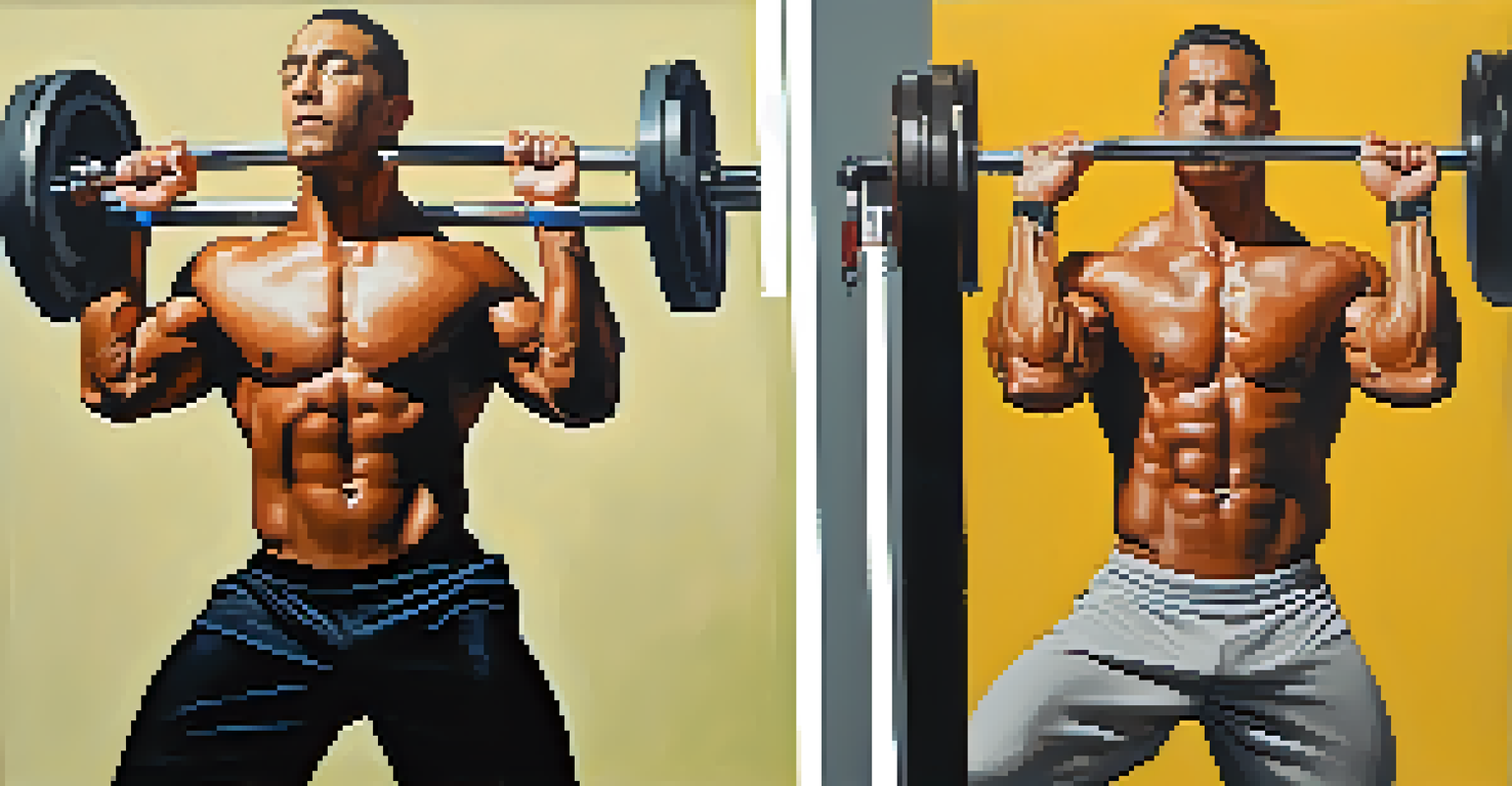Visualization in Powerlifting: A Key to Mental Mastery

Understanding Visualization: What Is It Really?
Visualization, often referred to as mental imagery, is the practice of creating vivid mental pictures of desired outcomes. In powerlifting, this means envisioning yourself successfully completing a lift before you even approach the barbell. It’s not just daydreaming; it’s an active way to engage your mind in the process of achieving your goals.
What you think, you become. What you feel, you attract. What you imagine, you create.
Many athletes, including powerlifters, use visualization to mentally rehearse their lifts. This can help them feel more prepared and confident when they step onto the platform. Think of it as a mental warm-up: just as your body needs to be ready physically, your mind needs to be sharp and focused.
Related Resource
Research has shown that mental visualization can improve performance by increasing muscle activation and reducing anxiety. By picturing successful lifts, athletes can train their brains to respond positively under pressure, making visualization a powerful tool in any powerlifter's arsenal.
The Science Behind Visualization and Performance
The effectiveness of visualization is backed by neuroscience. Studies indicate that when athletes visualize their performance, their brains activate similar neural pathways as when they physically perform the action. This means that visualization can essentially prime the brain for actual lifts, making it a form of mental practice.

For example, a powerlifter who visualizes themselves lifting a heavy weight can enhance their muscle memory. This mental rehearsal allows them to strategize their approach, refine their technique, and anticipate how their body will feel during the lift. It’s like running a mental simulation before the big event.
Visualization Boosts Performance
Engaging in mental imagery can enhance muscle activation and reduce anxiety, making athletes feel more prepared.
Additionally, visualization can help reduce performance anxiety, a common hurdle for many athletes. By repeatedly envisioning successful outcomes, lifters can build confidence and decrease the fear of failing, allowing them to focus better on their performance when it counts.
How to Incorporate Visualization into Your Training
Incorporating visualization into your powerlifting routine doesn’t have to be complicated. Start by setting aside a few minutes before your training sessions to sit quietly and envision your lifts. Close your eyes and imagine every detail: the weight on the bar, your grip, your stance, and the feeling of the lift as you execute it perfectly.
Visualization is daydreaming with a purpose.
You can also use visualization during your warm-up. As you go through your physical movements, picture yourself successfully completing your heaviest lifts. This practice not only prepares your mind but also reinforces your physical preparation, helping to create a holistic training experience.
Related Resource
Finally, don’t hesitate to create a visualization script or even a vision board. Write down your goals and the specifics of your lifts, and use these as a guide to help shape your mental imagery. The more detailed your visualization, the more effective it will be at preparing you for success.
Common Visualization Techniques for Powerlifters
There are several techniques powerlifters can use to enhance their visualization practice. One popular method is the 'first-person' perspective, where you imagine yourself in the moment, feeling the weight and experiencing the lift as if it were happening right now. This immersive approach can create a strong sense of familiarity and confidence.
Another effective technique is the 'third-person' perspective, where you visualize yourself from an outside viewpoint. This can help you analyze your form and technique objectively, allowing you to identify areas for improvement. It’s like watching a video of yourself lifting, but in your mind’s eye.
Techniques for Effective Visualization
Powerlifters can use first-person and third-person perspectives, along with relaxation techniques, to improve their visualization practice.
Finally, combining visualization with relaxation techniques, such as deep breathing or meditation, can enhance its effectiveness. By calming your mind and body, you create a more conducive state for productive visualization, making it easier to focus and achieve your lifting goals.
The Role of Affirmations in Visualization
Affirmations can play a significant role in the visualization process. These are positive statements that reinforce your belief in your abilities and goals. By integrating affirmations into your visualization practice, you can strengthen your mental resolve and cultivate a positive mindset.
For instance, as you visualize a successful lift, you might repeat affirmations like 'I am strong' or 'I can do this.' This combination of visualization and affirmations can help create a powerful mental environment that promotes confidence and motivation.
Related Resource
Moreover, consistent use of affirmations can help rewire your thinking patterns, making it easier to overcome self-doubt and anxiety. When you consistently tell yourself you are capable, your subconscious begins to believe it, translating into improved performance on the platform.
Overcoming Challenges in Visualization Practice
Like any skill, visualization takes practice, and you may encounter challenges along the way. One common hurdle is maintaining focus, especially in a busy or distracting environment. To combat this, try creating a dedicated space for your visualization sessions, free from distractions, where you can fully immerse yourself in the process.
Another challenge is dealing with negative thoughts or self-doubt. It’s important to acknowledge these feelings but not let them dominate your visualization practice. Instead, focus on positive imagery and outcomes, gradually training your mind to replace negativity with confidence.
Affirmations Enhance Mindset
Integrating positive affirmations into visualization can strengthen confidence and help overcome self-doubt.
Lastly, be patient with yourself as you develop your visualization skills. Just as physical strength takes time to build, so does mental strength. Consistency and perseverance in your practice will yield results, making visualization an invaluable part of your powerlifting journey.
The Impact of Visualization on Competitive Performance
When it comes to competition, the stakes are higher, and the mental game becomes even more crucial. Visualization can help powerlifters mentally prepare for the unique pressures of a competitive environment. By repeatedly visualizing the competition setting, lifters can familiarize themselves with the atmosphere and reduce anxiety.
For example, imagining yourself walking onto the platform, hearing the crowd, and executing your lift perfectly can help ease nerves. This mental rehearsal can create a sense of comfort, making the actual experience feel more manageable when the time comes.

Ultimately, the impact of visualization on competitive performance can be profound. Athletes who effectively use visualization often report feeling more confident, focused, and prepared, which can significantly enhance their overall performance on competition day.